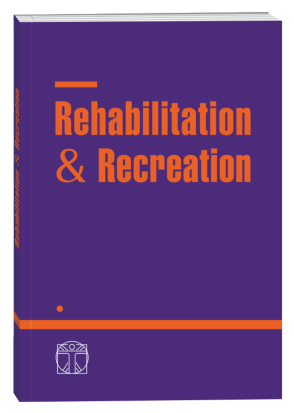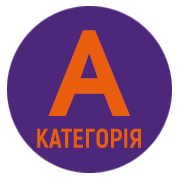EVALUATION OF EFFICIENCY OF A DIRECT BLOW WITH THE RIGHT HAND FROM A LEFT STANCE PERFORMED BY HIGHLY QUALIFIED ATHLETES SPECIALIZING IN HAND-TO-HAND COMBAT
DOI:
https://doi.org/10.32782/2522-1795.2024.18.3.24Keywords:
martial arts, hand-to-hand combat, sports training, comparative analysis, technique, kinematic structure, highly qualified athletesAbstract
The purpose is to evaluate the effectiveness of a direct blow with the right hand from the left stance, performed by highly qualified athletes who specialize in hand-to-hand combat. Methods. Theoretical ones aim to determine the relevance of the issue of forming a motor actions technique in hand-to-hand combat; empirical ones presuppose registration of kinematic characteristics of a direct blow technique with the right hand from the left stance that was carried out using the marker system of registration and analysis of movements Qualisis, which allowed to record the data in three-dimensional space. Methods of mathematical statistics include the method of average values and the sampling method. We registered the technique of performing the studied motor action in 12 highly qualified athletes. The results. The straight right-hand blow from the left stance is one of the most widely used and effective punches in hand-to-hand combat. Unlike side blows and bottom blows, direct ones do not have a swing phase, so their total duration is shorter. Thus, all direct blows with hands (both left and right) consist of the following phases: preparation for the blow, impact movement, contact and return to the starting position. As mentioned above, there is no swing phase when performing direct blows with the hands. Therefore, the analysis of the movement actions of athletes in the phase of preparation for the impact is of significant importance, since during this phase of movement the athlete is directly preparing for the execution of the impact movement, and the effectiveness of the impact technique execution is more dependent on the actions in this phase than when performing side blows with the hands or blows with the hands from below. And since the duration of preparation phase for the impact is only 0.13 s, the analysis of movements in this phase is important. Conclusions. A comparative analysis of the organizational structure (technique of execution of blowing actions) allows us to state that it remains invariant with both translational and rotational acceleration of the working link according to the main, basic implementation mechanisms. During the impact movement, the structural elements form a system unity, starting with preparatory movements (initial acceleration of the athlete’s body), main ones (generation and transfer of mechanical impulse in the system of links of the athlete’s body from the lower links of the biokinetic chain to its upper ones) and final actions (final acceleration and impact). It was established that a direct blow with the right hand from a left stance performed by highly qualified athletes is an effective motor action from the point of view of biomechanical analysis of its kinematic structure. This is evidenced by the indicator of the maximum speed of the impact biolink, which reaches a speed of 9.37 m·s-1 at the end of the impact phase; insignificant duration of the phases of preparation for impact – 0.13 s and impact movement – 0.17 s; effective body postures of athletes at extreme moments between phases of movement; the use of all body muscles and inertial forces during the impact to increase the force and power of the impact; an effective mechanism for transferring the amount of movement to the shock biolink.
References
Вако І.І. Визначення помилок, що допускають юні спортсмени, які спеціалізуються в рукопашному бою, при освоєнні бокових ударів руками. Rehabilitation & Recreation. 2021. № 9. С. 23–28. https://doi.org/10.32782/2522-1795.2021.9.3.
Вако І.І., Радченко Ю.А. Структура успішності змагальної діяльності в змішаних єдиноборства (на прикладі рукопашного бою). Спортивний вісник Придніпров’я. 2022. № 2. С. 111–122. DOI: 10.32540/2071-1476-2022-2-111.
Вако І. Характерні помилки, що допускають юні спортсмени, які спеціалізуються в рукопашному бою, при освоєнні ударів ногами. Фізична культура, спорт та здоров’я нації. 2022. № 13 (32). С. 134–42. DOI: 10.31652/2071-5285-2022-13(32)-134-142.
Кашуба В., Литвиненко Ю., Вако І. Особливості техніки бокового удару рукою на ближній дистанції висококваліфікованих спортсменів, які спеціалізуються в рукопашному бою. Науковий часопис НПУ імені М.П. Драгоманова. 2020. № 8. (128)2. С. 83–87. https://doi.org/10.31392/NPU-nc.series15.2020.8(128).19.
Кашуба В., Литвиненко Ю., Вако І. Відмінні риси техніки бокового удару рукою на ближній дистанції спортсменів різної кваліфікації, які спеціалізуються в рукопашному бою. Молодіжний науковий вісник Східноєвропейського національного університету імені Лесі Українки. 2020. № 37. С. 131–37.
Радченко Ю.А., Вако І.І. Модельні характеристики техніко-тактичної підготовленості найсильніших спортсменів у змішаних єдиноборствах (на прикладі рукопашного бою). Фізична культура, спорт та здоров’я нації. 2022. № 14 (33). С. 74–83. https://doi.org/10.31652/2071-5285-2022-14(33)-74-83.
Gamalii V., Potop V., Lytvynenko Y., Shevchuk O. Practical use of biomechanical principles of movement organization in the analysis of human motor action. Journal of Physical Education and Sport. 2018. 18(2). 874–7.
Kashuba V., Khmelnitska I., Krupenya S. Biomechanical analysis of skilled female gymnasts’ technique in “round-off, flic-flac” type on the vault table. Journal of Physical Education and Sport, 2012. (4), 431–435.
Kashuba V., Stepanenko O., Byshevets N., Kharchuk O., Savliuk S., Bukhovets B., Grygus I., Napierała M., Skaliy T., Hagner-Derengowska M., Zukow W. (2020). Formation of Human Movement and Sports Skills in Processing Sportspedagogical and Biomedical Data in Masters of Sports. International Journal of Human Movement and Sports Sciences, 2020. 8(5), 249–257. DOI: 10.13189/saj.2020.080513.
Kindzer B., Danylevych M., Ivanochko V., Hrybovska I., Kashuba Y., Grygus I., Napierala M., Smolenska O., Ostrowska M., Hagner-Derengowska M., Muszkieta R., Zukow W. Improvement of special training of karatists for kumite competitions using Kata. Journal of Physical Education and Sport, 2021. Vol. 21 (5), 2466–2472.
Vako I., Kashuba V., Litvinenko Y., Goncharova N., Samolenko T., Tarasyuk V., Nikitenko O., Kovalchuk L. Identification of distinctive biomechanical features of the technique of side hand strike at close range of athletes of different qualifications specializing in hand-to-hand combat. 2021. Journal of Physical Education and Sport. 2835–2841. DOI: 10.7752/jpes.2021.s5377.
Vako I.I., Grygus I.M., Nikitenko O.V. The use of modern multimedia resources practice of sports and physical education. Rehabilitation & Recreation. 2023. 14. 258–268. https://doi.org/10.32782/2522-1795.2023.14.31.
Vako I., Kashuba V., Khmelnitska I., Radchenko Y., Radchenko A., Carp I., Krupenya S. Utilizing technology to develop fundamental motor skills in young athletes specializing in hand-to-hand combat. Journal of Physical Education and Sport, 2024. Vol. 24 (issue 2), pp. 303–312. DOI: 10.7752/jpes.2024.02036.
Vako I.I., Radchenko Y.A., Shevchuk O.M. (2024). Сomparative analysis of the kinematic structure of the technique of right- and left-hand hooks from the frontal guard of high qualified athletes specializing in hand-tohand combat. Rehabilitation & Recreation. 18.
Pp. 210–217. https://doi.org/10.32782/2522-1795.2024.18.22.
Downloads
Published
How to Cite
Issue
Section
License
Copyright (c) 2024 І. І. Вако, Ю. А. Радченко, О. В. Нікітенко

This work is licensed under a Creative Commons Attribution-NonCommercial-NoDerivatives 4.0 International License.












